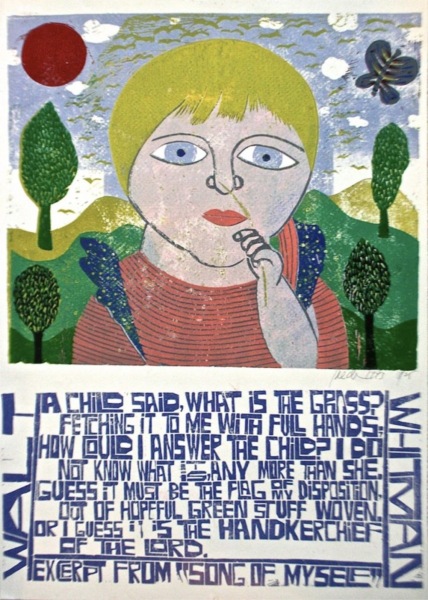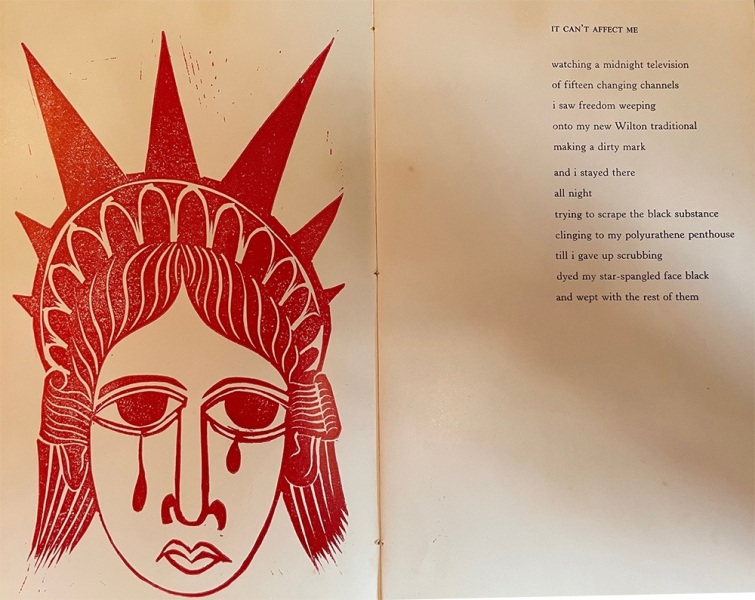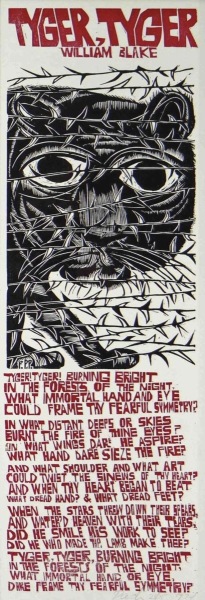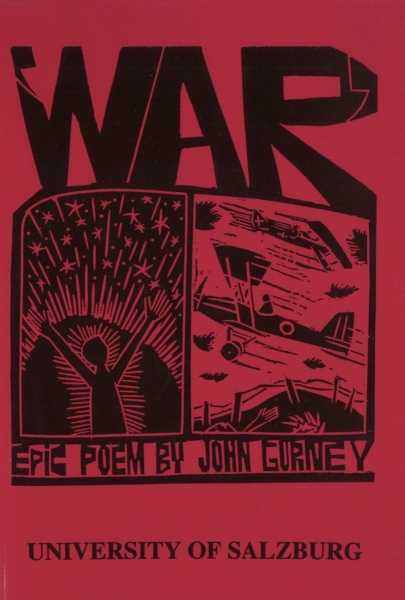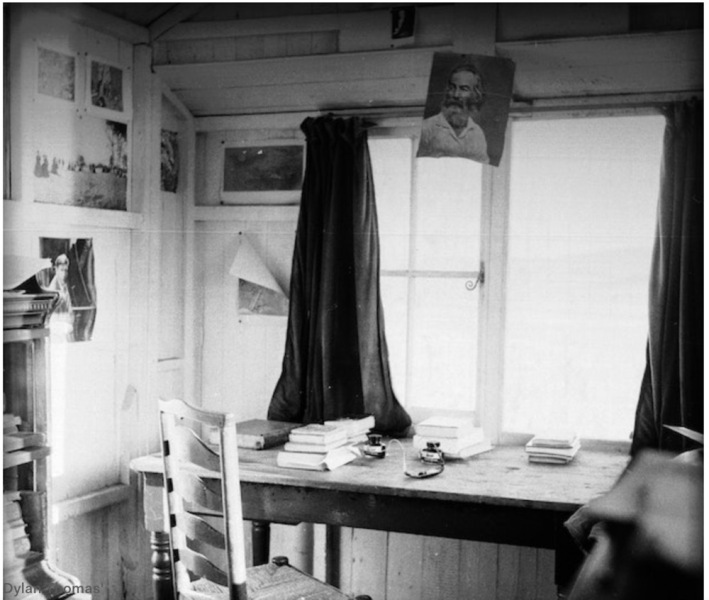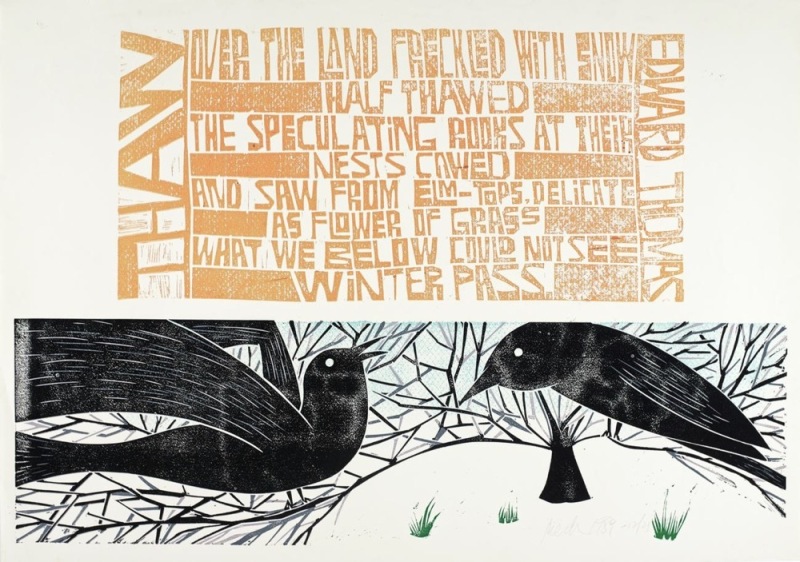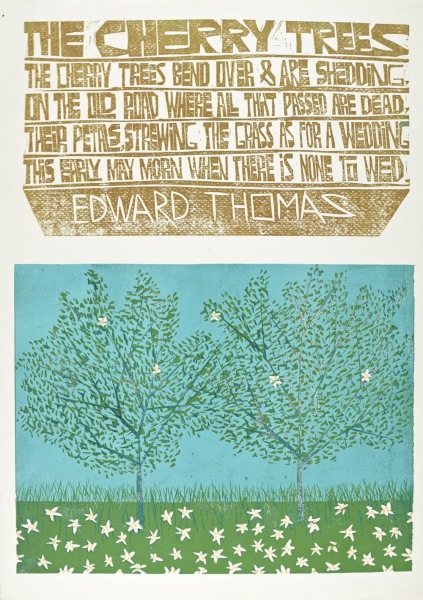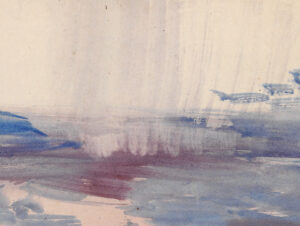Rowan Bell on Ukrainian-American graphic artist Paul Peter Piech and his bold illustrations of poetry
Paul Piech was a designer and graphic artist with an extraordinary life story, full of irony, twists and turns. If he was cast as a protagonist in a novel a rejection slip would soon be on the way. A character who ricocheted from successful ad-man to painter of glamour girls on bombers to political activist to acclaimed artist happily married to his wartime sweetheart is stranger than fiction. In just one example from his prodigious output, his 1979 picture of the United States flag turned sideways as prison bars with the caption “My country ‘tis of thee, sweet land of liberty” drew a complaint from the American Embassy; but a subsequent picture of President Nixon with the word “Dicktator” was purchased by the USA Library of Congress.
As a young man he realised the American dream by studying at New York Cooper Union College of Art under the tutelage of other émigrés from Europe, including the German book cover designer George Salter, before starting a successful career in advertising with the Dorland Advertising Agency and then Columbia Records. The Second World War intervened, and he was posted to Wales with the air force, but his eyesight wasn’t good enough to be a pilot. Instead he painted pictures of glamorous blondes on the noses of the aircraft sent on bombing raids.
Perhaps it was the complex geopolitics of Ukraine and subsequent occupation by the USSR – still being played out today – that set his future career in art, poetry, and political activism in motion
It was in Wales he met his future wife, the nurse Irene Tomkins, who didn’t want to move to the USA, so after the war he returned to marry her in 1947 and studied at the Chelsea College of Art before continuing in advertising with W.S. Crawfords. Subsequently he taught at Chelsea, Leicester and the London College of Printing.
Perhaps it was the complex geopolitics of Ukraine and subsequent occupation by the USSR – still being played out today – that set his future career in art, poetry, and political activism in motion and led to the description of himself: “I’ve been called a Fascist. I’ve been called a Communist. I’ve been called a racist. I’ve been called everything after any of my shows happen because of certain posters, you see. But they can’t pin me down to any ‘isms … I just look at humanity the way it is and then I make a graphic expression of it. The purpose of graphic expression is to realize some truth that they’re missing and to do something about it … I don’t want to sit around and be silent.”
Piech worked constantly, for example illustrating a series of books with the former fighter pilot John Gurney, four-times prize-winner in the Poetry Society’s National Poetry Competition, and one of the most prolific poets in the English language; perhaps now recognised more for his industry than his poetic skill, such as the epic poem ‘War’ with its 16,000 ten-syllable lines published in 24 books in 1996 by Salzburg University Press:
Picking at the blackened rubber sponge
that melted at its edges, he exhaled
a dark-blue sigh, that filled the sheath of light
that rippled round his body, soft as silk,
and fluid as the gore-stained woman’s scarf
that flustered at his throat. he sighed again.
Later in his career Piech produced many expressive pictures featuring snippets from well-known poets such as Blake, Whitman and Basho; and it was in these linocuts that he created his own personal interpretations of famous poems. Walt Whitman used space on the page to create expression, such as this in this excerpt from his 1892 poem “Song of Myself” where he indents lines for emphasis and mood:
A child said What is the grass? fetching it to me with full hands;
How could I answer the child? I do not know what it is any
more than he.
I guess it must be the flag of my disposition, out of hopeful green
stuff woven.
Or I guess it is the handkerchief of the Lord,
Whitman echoes the ‘Child’s Guide to Knowledge being a collection of useful and familiar questions and answers on every-day subjects adapted for young persons, and arranged in the most simple and easy language’ by ‘A Lady’ published in 1865.
Question: What is the World?
Answer: The earth we live on.
Q. Who made it?
A. The great and good God.
Q. Are there not many things in it you would like to know about?
In his poem Whitman counters the 19th century dominance of anthropocentric religious dogma by questioning the intrinsic value of nature – a topic later forcefully addressed by an admirer of Whitman, Dylan Thomas in his poem ‘Green Fuse’. Whereas Piech, in the direct simplicity of his artistic rendering of the child in a meadow and reimagining of the poem’s structure, makes a gentle contemporary political statement to express ecological concerns following Rachel Carson’s 1962 ‘Silent Spring’ with its denunciation of technological onslaught on the natural world.
But perhaps his more interesting work that demonstrates the bond between artist and poet comes from the Taurus Press that he set up in 1959 and which features a strong and deceptively simple political imagery. His collaboration with Lynn Middlehurst, who was his student at the London College of Printing, has no boundary between artist and poet.
Only 235 roughly cloth bound and profoundly personal copies of his work with Middlehurst ‘It Can’t Affect Me & Other Poems’ were printed in 1972. It’s an absolute gem of direct speaking and direct art about what it feels like to be the object of racism in pervasive media onslaught. The poems and pictures resonate as deeply today as they did then.
It can’t affect me
watching a midnight television
of fifteen changing channels
i saw freedom weeping
onto my new Wilton traditional
making a dirty mark

